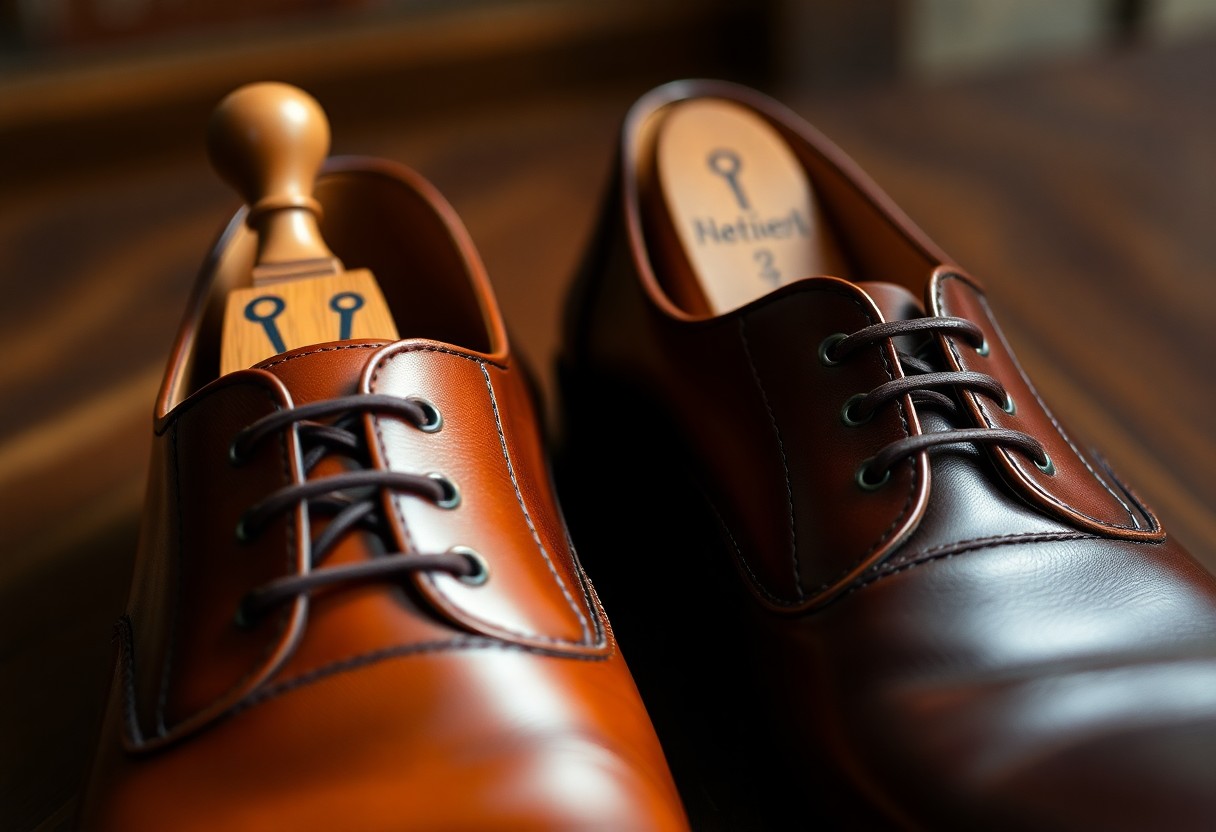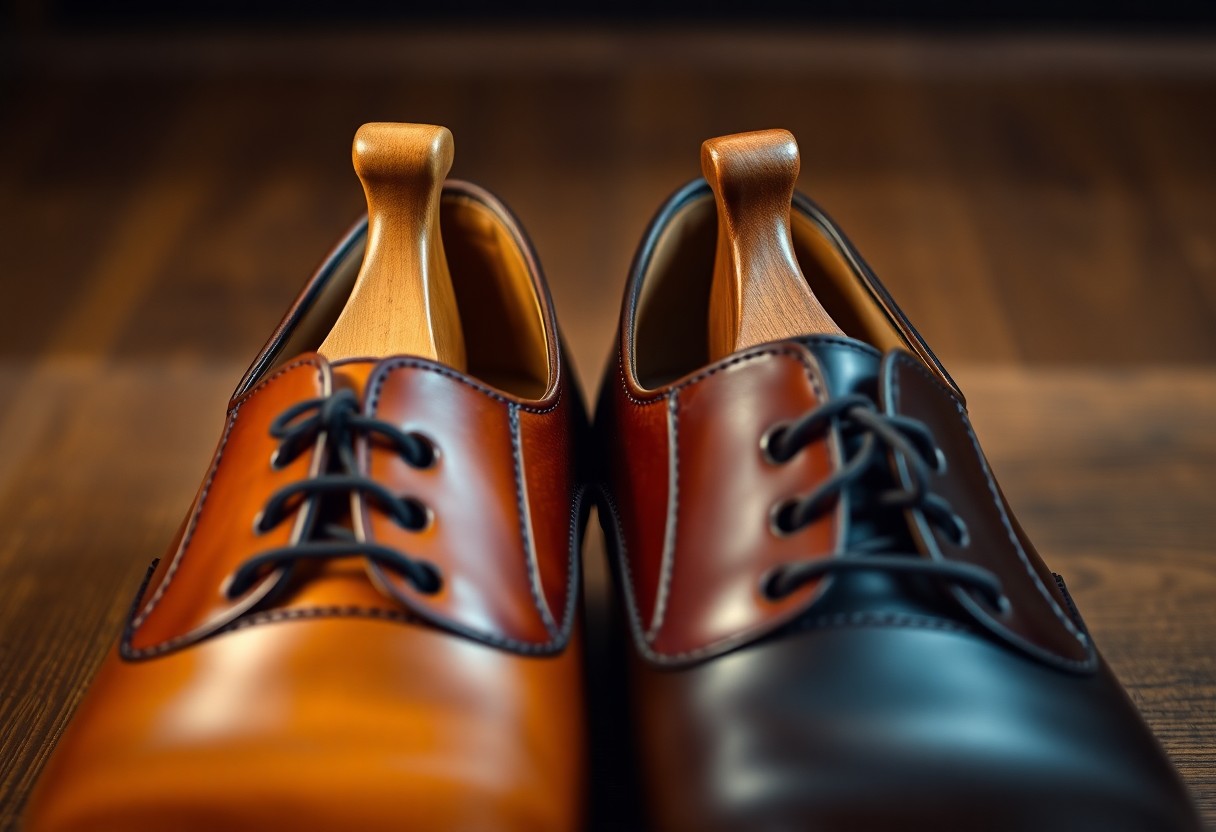Many shoe enthusiasts frequently underestimate the significant impact that low-quality shoe trees can have on their premium footwear. It’s essential to recognize that investing in high-quality shoe trees is not just beneficial but necessary, as they can extend the lifespan of your quality shoes by up to 300%. By selecting superior shoe trees, you effectively safeguard your footwear from moisture damage, maintain their ideal shape, and prevent unsightly creases in the leather. While budget-friendly options may initially appear attractive, they can ultimately lead to irreversible deformation and structural issues that jeopardize your investment. Prioritizing quality shoe trees is crucial to ensuring that your shoes retain their original form and durability for many years to come.
Understanding the Long-Term Costs of Choosing Cheap Shoe Trees
When you invest in high-quality footwear, it’s imperative to complement that with the right shoe trees. Although cheaper alternatives might seem appealing, they can lead to damage that could cost between $300 and $500 to repair on your premium shoes. Typically, quality shoe trees are only $30 to $50 more than their inexpensive counterparts, yet they provide exceptional moisture absorption and help maintain the shape of your shoes for years. The long-term benefits of investing in quality significantly outweigh the initial costs, making premium shoe trees a smart decision for any serious shoe collector aiming to protect their footwear investment.
Identifying Common Design Flaws in Inexpensive Shoe Trees
Upon careful examination, cheap shoe trees often showcase numerous design flaws that can severely undermine their effectiveness. You may observe excessive spring tension that warps the leather, poorly designed toe boxes that do not conform to natural foot shapes, and low-quality wood that fails to absorb moisture adequately. These fundamental design shortcomings render inexpensive options ineffective at preserving your valuable shoes. By being aware of these flaws, you can make informed decisions and select shoe trees that genuinely protect your investment over time.
Recognizing the Dangers of Using Low-Quality Shoe Trees on Premium Footwear
The most concerning aspect of using cheap shoe trees is the potential for irreversible damage to your footwear. Over time, your shoes can develop misshapen toe boxes, stretched vamps, and deformed heel counters. Such issues not only shorten the lifespan of your shoes but can also adversely affect their overall value. A thorough inspection of shoes compromised by low-quality shoe trees reveals damage that extends beyond superficial flaws, including uneven wear patterns, deteriorating leather quality, and inadequate moisture protection. The spring mechanisms in cheaper models can create pressure points that permanently alter the structure of your shoes, resulting in discomfort and diminished durability.

Key Features to Consider When Selecting Quality Shoe Trees
When choosing shoe trees for your footwear, it’s essential to focus on features that will effectively protect and preserve the shape of your shoes. Quality shoe trees distribute balanced pressure across the entire shoe, distinguishing them from cheaper alternatives that can inflict damage through excessive force. Premium options often come with adjustable width settings and proper heel support, making them an invaluable investment for your cherished shoes. Understanding these features is vital for selecting the ideal shoe trees that will serve your footwear well for many years.
Essential Construction Elements for Optimal Shoe Tree Performance
When evaluating high-quality shoe trees, several crucial components stand out. The split-toe mechanism should operate smoothly, allowing for gentle expansion without putting undue stress on the leather. Your ideal shoe tree needs a well-formed heel block that preserves the counter’s shape, along with a forefoot design that closely matches natural foot contours. These features work harmoniously to prevent creasing and maintain the structural integrity of your shoes, ensuring they remain in pristine condition for years of use.
Choosing the Right Materials for Optimal Shoe Tree Performance
The effectiveness of a shoe tree is significantly influenced by the materials used in its construction. Cedar wood is widely recognized as the superior choice, offering natural moisture absorption and a pleasant aromatic quality. Cedar not only helps combat odors but also fosters a healthy internal environment for your shoes. It is advisable to steer clear of plastic alternatives, as they lack moisture-wicking capabilities and can trap unwanted dampness, leading to potential damage. Moreover, cedar wood contains natural oils that help preserve leather quality, regulating humidity levels and preventing leather deterioration. Quality shoe trees crafted from cedar can deliver lasting benefits, making them a cost-effective investment for prolonging your footwear’s lifespan by up to 30%.
Strategies for Safeguarding Your Investment in Quality Footwear
Considering the significant investment you make in quality shoes, selecting the appropriate shoe trees is crucial for preserving that investment. High-quality shoe trees can extend your footwear’s lifespan by an impressive 15 to 20 years, while cheaper alternatives can lead to damages that cost hundreds of dollars. It’s vital that your premium footwear is supported by the right care tools to maintain its value and appearance, ensuring that your investment remains secure over the years.
Effective Strategies for Preserving the Value of Your Footwear
Protecting your shoes begins with the right choice of shoe trees. Poor-quality trees can easily deform expensive shoes, particularly in vulnerable areas like the heel counter and vamp. By investing in quality shoe trees, typically priced between $50 and $80, you can help maintain the original shape of your footwear and prevent costly repairs or replacements down the line. Prioritizing quality significantly enhances the longevity and aesthetics of your shoes, ensuring they look great for many years.
Enjoying the Longevity Benefits of Quality Shoe Trees
Utilizing high-quality shoe trees ensures optimal moisture absorption and shape retention, making them indispensable in your shoe care routine. Cedar wood shoe trees can absorb up to 60% more moisture than cheaper plastic alternatives, allowing your shoes to dry naturally and retain their structure between wears. Consistent use of proper shoe trees is vital for preserving your footwear. Quality shoe trees featuring a solid forefoot design and balanced spring tension will prevent deep creases from forming in the leather, which can lead to cracks and irreversible damage. With proper support from quality shoe trees, your shoes will maintain their original shape and comfort for many years.

Steps to Selecting the Ideal Shoe Trees for Your Footwear
After reviewing various shoe tree options, it’s essential to strike a balance between quality and functionality. A well-constructed shoe tree should completely fill your shoe’s toe box while providing gentle tension</b
Categories:
Tags:


Comments are closed